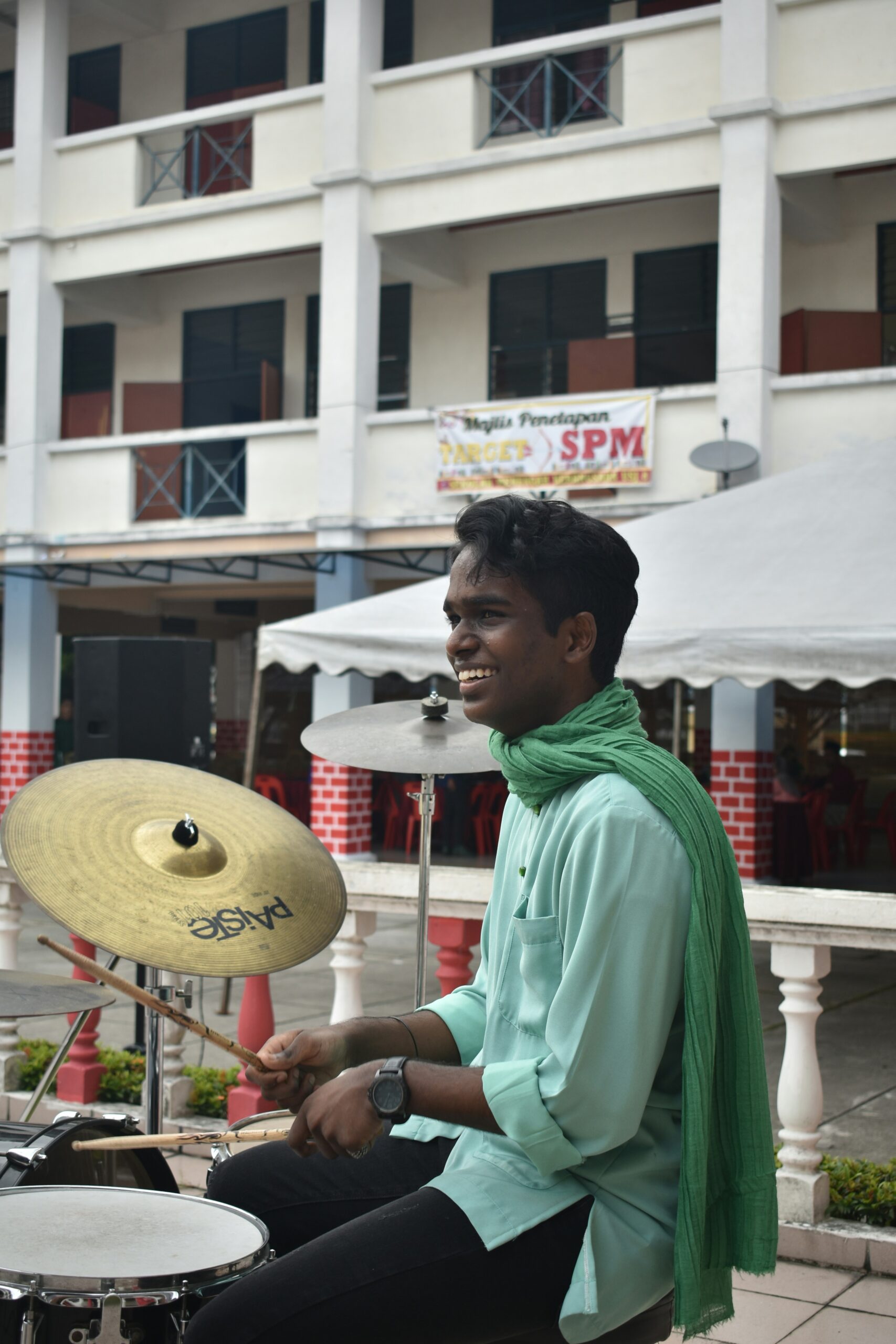Understanding Mardi Gras
Mardi Gras, often translated as “Fat Tuesday,” is a significant cultural celebration that takes place primarily in regions with strong Catholic traditions. Historically, Mardi Gras marks the last day before the Lenten season begins on Ash Wednesday, a period during which many Christians practice fasting and abstaining from various luxuries. The day is characterized by feasting and celebration, as participants indulge in rich foods and festivities before the somber season of Lent.
The roots of Mardi Gras can be traced back to ancient pagan festivals celebrating the arrival of spring. However, the celebration was appropriated by the Christian calendar, merging with the rhythm of Carnival, which translates to “farewell to meat.” This connection underscores the necessity of utilizing up rich ingredients like butter, eggs, and sugar before the Lenten fast begins. The duality of its religious significance and festive atmosphere is a hallmark of Mardi Gras, distinguishing it as a vibrant and cherished event.
When is Mardi Gras 2025?
Mardi Gras, a vibrant cultural celebration associated with the beginning of Lent, will fall on February 25th in 2025. This date is pivotal within the larger framework of the Christian calendar as it precedes Ash Wednesday, which marks the onset of Lent. The calculation of Mardi Gras is intricately tied to the timing of Easter, making it a movable feast. Easter Sunday is determined based on the first full moon following the vernal equinox, a process known as the Paschal Full Moon.
The variability of Easter’s date means that Mardi Gras can occur on different days each year, ranging from February 3rd to March 9th. This fluctuation is due to the ecclesiastical approximation of the March equinox, which is fixed annually. Consequently, understanding the relationship between Easter and Mardi Gras provides insight into the reasons behind the changing dates each year.
In 2025, revelers can look forward to the festivities leading up to Fat Tuesday, including parades, masquerade balls, and various cultural events that highlight the rich heritage of Mardi Gras. Cities such as New Orleans host some of the most famous celebrations, drawing millions of participants eager to experience the grandeur of this event. Events and activities often begin weeks before Fat Tuesday, building anticipation and excitement among locals and visitors alike.
Therefore, as Mardi Gras approaches in 2025, it is essential to recognize both the specific date and the historical significance of this celebration, which not only marks a cultural tradition but also serves as a joyful farewell to indulgence before the season of Lent begins.
The Countdown to Fat Tuesday
The period leading up to Fat Tuesday, known as the Carnival season, is an exhilarating time characterized by celebrations, parades, and various traditions. This vibrant festival, which culminates on Fat Tuesday, offers a unique opportunity for communities and individuals to engage in various cultural practices and revelry. The significance of the days preceding Fat Tuesday cannot be understated, as they set the stage for the grand culmination of Mardi Gras festivities.
In the weeks leading up to Fat Tuesday, cities such as New Orleans and Mobile become focal points of activity. Parades play a central role during this time, featuring elaborately decorated floats and costumed participants who embody the spirit of the Carnival season. Each parade is organized by social organizations known as krewes, which often have their own unique themes and traditions. It is during this exhilarating countdown that the vibrant energy of the season comes to life, inviting both locals and tourists to join in the festivities.
Beyond parades, various community events and celebrations are held throughout the Carnival season. These gatherings may include concerts, masquerade balls, and street parties that encourage participation from all ages. Traditional foods, such as king cakes, are commonplace during this time as families and friends come together to indulge in festive culinary delights. The king cake, adorned with colorful icing and a hidden baby figurine, adds an element of playful competition, as finding the baby represents good luck and the responsibility of hosting the next celebration.
As Fat Tuesday approaches, the anticipation and excitement among participants continue to grow. The countdown signifies a time for both reflection on the past year’s experiences and the embrace of new beginnings through celebration, making this season one of joy, community, and shared heritage.
Celebrating Fat Tuesday: Traditions and Festivities
Fat Tuesday, known as Mardi Gras in French, marks the culmination of the Carnival season and is celebrated with a plethora of vibrant traditions and activities. This festive day is characterized by masquerade balls, lively street parades, and the indulgent enjoyment of food and music. Communities come alive as locals and visitors alike partake in the jubilant atmosphere that defines this special occasion.
One of the most prominent aspects of Fat Tuesday celebrations is the street parade, which showcases elaborate floats and costumes. These parades, often led by various social clubs known as “krewes,” feature marching bands that contribute to the festive spirit through rhythm and melody. Participants dress in colorful attire, often adorned with beads and feathers, creating a visual representation of the celebration’s festive essence. Music plays a vital role in these gatherings, encapsulating the energy of the day and drawing individuals into the lively ambiance.
In addition to the parades, masquerade balls are a cornerstone of Mardi Gras festivities. These events provide participants an opportunity to don masks and elegant costumes, adding an air of mystery and elegance to the celebrations. Most balls are organized by krewes and often serve as platforms to crown royalty, such as the King and Queen of Mardi Gras, further heightening the excitement surrounding the event.
No Mardi Gras celebration would be complete without the iconic King Cake, a traditional dessert associated with Fat Tuesday. This specialty cake, typically adorned with purple, green, and gold icing, symbolizes royalty and festivities. Each cake conceals a small figurine, often representing the Baby Jesus, and the person who finds it is tasked with hosting the next celebration, promoting a sense of community and continuity among participants. As the clock approaches midnight, revelers partake in delicious food and lively celebrations, embracing the spirit of indulgence that defines Fat Tuesday.
Regional Variations: How Different Places Celebrate
Mardi Gras is celebrated in various forms across the globe, embodying unique customs, foods, and musical traditions that reflect local culture. One of the most famous celebrations occurs in New Orleans, Louisiana, where the festival is characterized by colorful parades, elaborate floats, and vibrant street parties. The tradition of king cakes, a sweet pastry often decorated with purple, green, and gold icing, is a hallmark of New Orleans Mardi Gras. Here, revelers engage in costume contests and enjoy live jazz music that echoes throughout the streets, creating a festive atmosphere that attracts millions each year.
Traveling south to Brazil, the Rio de Janeiro Carnival presents a different yet equally captivating take on Mardi Gras. This vibrant celebration is renowned for its samba parades, where samba schools compete in dazzling displays of music and dance. Rio’s Carnival is marked by its iconic costumes adorned with feathers and sequins, immersing participants in a visual feast. Additionally, street parties known as “blocos” allow locals and tourists alike to join in the revelry, celebrating with traditional Brazilian foods such as feijoada, a hearty black bean stew. The infectious spirit of samba creates an atmosphere filled with joy and unity.
Across the Atlantic, Venice boasts a strikingly different Mardi Gras experience, known as Carnevale. This Italian festival is famous for its elaborate masks and period costumes, harking back to its aristocratic past. Visitors revel in the beauty of Venice’s canals as they enjoy various events, including the Grand Ball and numerous local celebrations featuring traditional Venetian delicacies like fritole, sweet fried pastries. The enchanting city becomes a living canvas of art and history during this time, offering a unique take on the festivities.
Additionally, in Mobile, Alabama, Mardi Gras is considered the original American celebration, predating that of New Orleans. Established in the 18th century, Mobile’s festivities include historic parades and unique floats, as well as traditional foods such as gumbo and boudin. The local customs, interwoven with Southern hospitality, create an atmosphere of community and warmth.
Safety and Etiquette During Mardi Gras
Mardi Gras is a vibrant and exhilarating celebration that draws thousands of participants and spectators each year. While revelry and celebration are at the forefront of this festive occasion, it is essential to prioritize safety and adhere to local customs to ensure a respectful and enjoyable experience for all. The following guidelines provide insights into how to engage in the festivities responsibly while respecting the traditions of the communities involved.
First, it is crucial to be aware of the crowd dynamics during Mardi Gras. Large gatherings can lead to overwhelming situations. To navigate through crowds efficiently, one should remain alert, use designated pathways, and maintain a comfortable personal space. Planning ahead by identifying key locations, like restrooms and exits, helps in avoiding unnecessary congestion and promotes overall safety. Moreover, staying hydrated and making arrangements for transportation before the celebrations commence can mitigate the risks of exhaustion and potential accidents.
In addition to crowd management, understanding and abiding by local laws is paramount. Mardi Gras festivities are often accompanied by specific regulations regarding alcohol consumption, public behavior, and noise levels. Participants should familiarize themselves with these laws to avoid any penalties that could detract from the overall enjoyment of the festivities. Additionally, it is essential to remember that the enjoyment of Mardi Gras does not entail compromising the safety and comfort of others.
Lastly, social etiquette plays a significant role in maintaining the spirit of Mardi Gras. It is vital to respect the customs and traditions of the local community, which have been cultivated over generations. Participating thoughtfully in traditions, such as wearing masks or joining parades, demonstrates a commitment to honoring the celebration’s heritage. By embodying respect and understanding during this festive period, individuals can contribute positively to the shared experience of Mardi Gras.
Mardi Gras in Popular Culture
Mardi Gras, known for its vibrant celebrations and distinct traditions, has woven itself into the fabric of popular culture across various mediums, including films, music, art, and literature. Its essence, embodying themes of revelry and community, resonates with diverse audiences, elevating the celebration beyond its origins in New Orleans.
In cinema, iconic films such as “The Curious Case of Benjamin Button” and “The Princess and the Frog” showcase the distinctive allure of Mardi Gras. These representations encapsulate the festive spirit and the intricate symbolism associated with the event, allowing audiences worldwide to appreciate the cultural significance behind the parades, masks, and joyful gatherings. By depicting the lively atmosphere of Mardi Gras, filmmakers have contributed significantly to the celebration’s global recognition.
Music plays an equally pivotal role in promoting the spirit of Mardi Gras. Genres such as jazz and zydeco, often associated with New Orleans, have their roots deeply embedded in the celebration. Renowned artists and bands frequently release songs that capture the exuberance of the festivities, with Mardi Gras-themed tracks enriching playlists and making their way into celebrations globally. Parades set to lively music unite participants and spectators, further solidifying the significance of music in the cultural representation of Mardi Gras.
Art also reflects the playful yet profound elements of Mardi Gras. Visual artists often draw inspiration from its motifs, creating vibrant paintings, sculptures, and installations that mirror the event’s color and dynamism. The use of masks and costumes as artistic expressions not only celebrates personal creativity but also pays homage to the historical roots of this festive occasion.
Literature has not shied away from exploring the themes surrounding Mardi Gras, with novels and poetry often delving into the deeper social and cultural narratives behind the celebration. Authors utilize the backdrop of Mardi Gras to explore themes of identity, community, and transformation, capturing the essence of the event in their writings.
Interview with Mardi Gras Enthusiasts
To capture the essence of Mardi Gras and its significance in our local culture, we spoke with a few passionate participants and event organizers who have dedicated their lives to celebrating this vibrant festival. One long-term participant, Anne-Marie, reminisced about her first Mardi Gras experience as a child. “I remember the vibrant colors, the energy of the crowds, and the smell of delicious food wafting through the air,” she shared. For her, the most memorable tradition is the family gathering they host every Fat Tuesday. “It’s a time when we come together to cook traditional dishes, such as gumbo and king cake, and share stories of past celebrations,” she added.
Another enthusiastic organizer, Lorenzo, expressed his pride in the community involvement that surrounds Mardi Gras. “It’s incredible to see everyone come together, whether they are decorating floats or participating in parades. Each person contributes to a unique tapestry of talent and creativity that defines our celebration.” Lorenzo emphasized the importance of preserving traditions while also welcoming new ideas and inclusivity into the festivities. “In the past, we’ve had groups from different backgrounds join us to showcase their cultures, which enriches the overall experience and creates unity among our diverse community,” he stated.
For many, Mardi Gras is not just a single day of revelry but a season filled with anticipation and preparation. Maria, a newcomer to the celebrations, described her joyful experience while learning the customs and traditions. “I participated in my first parade last year, and it was exhilarating. I love the floats, the music, and how everyone comes together to celebrate life.” Her perspective highlights how the spirit of Mardi Gras allows each participant, whether new or experienced, to find personal joy and connection within the broader celebration. These individual stories exemplify the heart of Mardi Gras, demonstrating that at its core, it is a festival of togetherness and cultural heritage.
Looking Ahead: Future Mardi Gras Celebrations
The celebration of Mardi Gras, deeply rooted in tradition, continues to evolve as society changes. As we look ahead to future festivities beyond 2025, it is essential to consider not only the preservation of historical customs but also the adaptation of new elements that reflect contemporary culture. Future Mardi Gras celebrations are likely to blend traditional practices with modern interpretations, ensuring the event remains both relevant and engaging for diverse audiences.
The influence of global events cannot be overlooked when discussing the future of Mardi Gras. Climate change, pandemics, and socio-political movements have already altered the way festivals are organized and experienced. For instance, in response to challenges posed by health crises, we may see the rise of hybrid celebrations that incorporate both in-person and virtual elements. This innovation would allow for broader participation while honoring the core ethos of Mardi Gras—the joyous communion of communities.
Technological advancements are also expected to play a significant role in shaping future Mardi Gras experiences. From augmented reality parades to enhanced social media interactions, technology will offer new ways for celebrants to engage with traditions. Communities might harness these tools to create virtual floats and artistic displays, ensuring that the spirit of Mardi Gras is accessible to those unable to attend in person.
Furthermore, as the demographics of celebrants shift, it will be crucial to keep the cultural heritage of Mardi Gras alive. Engaging younger generations through education and participatory events will help instill a deep appreciation for the significance of this celebration. By fostering an environment that honors the past while welcoming innovation, future Mardi Gras celebrations can thrive, reflecting the evolving nature of cultural expression.



